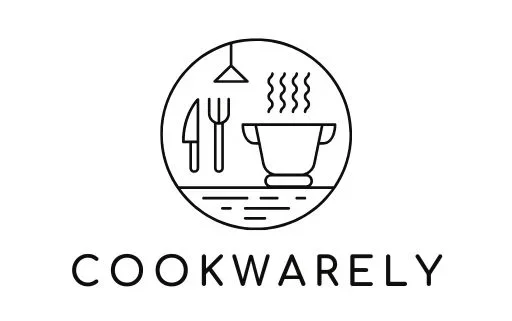Open Shelving vs. Closed Cabinets: What Works Best in Dining Rooms?
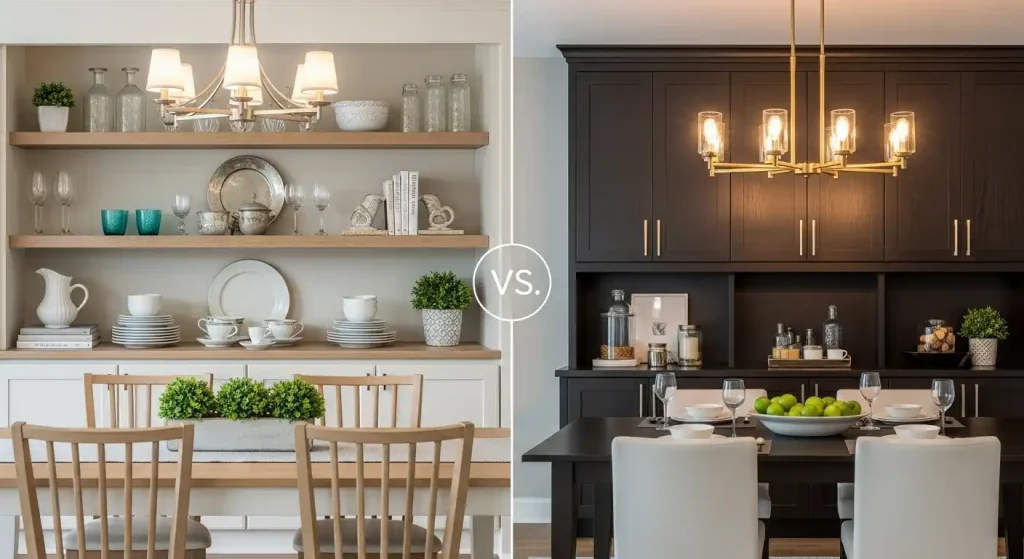
Dining rooms have changed dramatically in recent years.
They are no longer reserved for formal dinners that happen only a few times a year.
Instead, they serve as everyday spaces where families eat, friends gather, and memories are made.
This shift has placed more importance on how dining rooms are designed and organized.
🎃 Spooky Good Amazon Deals This Fall !
From cozy fall essentials to Halloween must-haves, shop Amazon’s seasonal discounts now. Don’t wait, deals vanish fast!
*As an Amazon Associate, I earn from qualifying purchases.
At the center of this design conversation is storage.
The debate often comes down to one question: open shelving vs. closed cabinets.
Both styles come with unique strengths, challenges, and design opportunities.
Open shelving offers an airy, stylish, and accessible solution.
Closed cabinets create a classic, clean, and highly practical setup.
The right choice depends on lifestyle, dining room size, and personal taste.
This article explores both options in detail to help you decide what fits your dining room best.
Understanding Dining Room Storage Needs
Storage in a dining room isn’t just about keeping items out of sight.
It plays a big role in how the space looks and functions daily.
A well-organized dining room keeps essentials close at hand while maintaining a sense of order.
People often use dining storage for dishes, glassware, cutlery, table linens, and seasonal décor.
Some homeowners prefer to showcase fine china or collectibles.
🎃 Spooky Good Amazon Deals This Fall !
From cozy fall essentials to Halloween must-haves, shop Amazon’s seasonal discounts now. Don’t wait, deals vanish fast!
*As an Amazon Associate, I earn from qualifying purchases.
Others want every item hidden neatly away until needed.
The choice between open shelving and closed cabinets comes down to which storage style matches your dining habits.
A family that hosts weekly dinners may need quick accessibility.
Someone who values a clutter-free aesthetic may prefer concealed storage.
Both approaches work, but in different ways.
Factors to Consider Before Choosing Storage Style
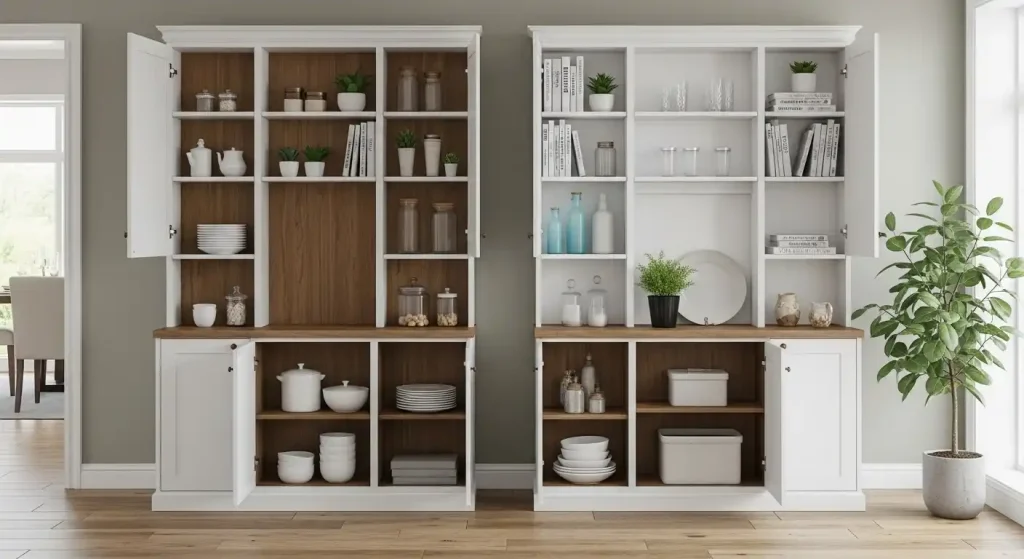
Before deciding between open shelving and closed cabinets, it’s important to consider your room’s layout and size.
A small dining room benefits from storage that doesn’t overwhelm the space.
Open shelving can make the area feel more spacious and light.
In contrast, larger rooms may handle bigger cabinets without feeling crowded.
Lifestyle is another factor.
Do you want to display collections or keep everything tucked away?
Maintenance plays a role as well.
🎃 Spooky Good Amazon Deals This Fall !
From cozy fall essentials to Halloween must-haves, shop Amazon’s seasonal discounts now. Don’t wait, deals vanish fast!
*As an Amazon Associate, I earn from qualifying purchases.
Open shelves require frequent dusting and styling, while closed cabinets demand less attention.
Budget also matters.
Open shelving often costs less to install, while cabinets are more expensive but offer long-term durability.
Your dining room’s design style should guide your choice too.
For example, a farmhouse dining room may look better with rustic open shelves.
A modern dining room might shine with sleek built-in cabinets.
Open Shelving vs. Closed Cabinets: Pros and Cons Overview
The open shelving vs. closed cabinets debate is not about right or wrong.
It’s about what works for your specific dining room.
Open shelving makes a dining area feel brighter and more inviting.
It provides quick access to everyday dishes and allows you to decorate creatively.
🎃 Spooky Good Amazon Deals This Fall !
From cozy fall essentials to Halloween must-haves, shop Amazon’s seasonal discounts now. Don’t wait, deals vanish fast!
*As an Amazon Associate, I earn from qualifying purchases.
However, it requires regular upkeep and can look messy if overfilled.
Closed cabinets give a cleaner appearance and hide clutter with ease.
They protect items from dust, reduce maintenance, and add timeless elegance.
On the downside, they may appear heavy or traditional, depending on design.
Both choices have trade-offs.
The best option often depends on balancing style with practicality.
Open Shelving: Showcasing Style and Personality
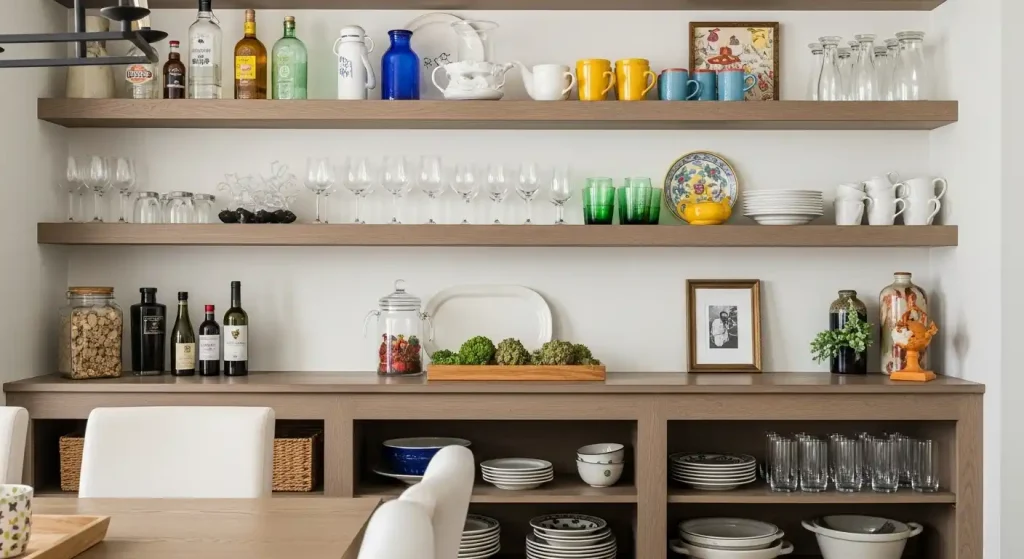
One of the biggest appeals of open shelving is its ability to showcase personal style.
Whether it’s elegant wine glasses, colorful ceramics, or family heirlooms, open shelves make these items part of the décor.
They turn functional storage into a curated display that reflects your taste.
Many homeowners use open shelving to rotate seasonal décor, creating a dining room that feels fresh year-round.
You can use a mix of textures, like wood and metal, to match the room’s theme.
The display approach works especially well in dining rooms designed for casual entertaining.
🎃 Spooky Good Amazon Deals This Fall !
From cozy fall essentials to Halloween must-haves, shop Amazon’s seasonal discounts now. Don’t wait, deals vanish fast!
*As an Amazon Associate, I earn from qualifying purchases.
For inspiration, see these glass cabinet display ideas, which apply similar principles to open shelving.
Open Shelving: Accessibility and Functionality
Functionality is another reason many homeowners choose open shelving.
Dishes, glasses, and serving bowls are always within easy reach.
This accessibility makes hosting dinner parties or family meals smoother.
Instead of opening and closing cabinet doors, everything you need is right there.
It saves time and adds convenience, especially for frequently used items.
Open shelving also encourages organization since items must look neat when exposed.
This can motivate homeowners to keep only what they truly use and love.
The result is a dining room that feels both practical and welcoming.
Open Shelving: The Challenge of Maintenance
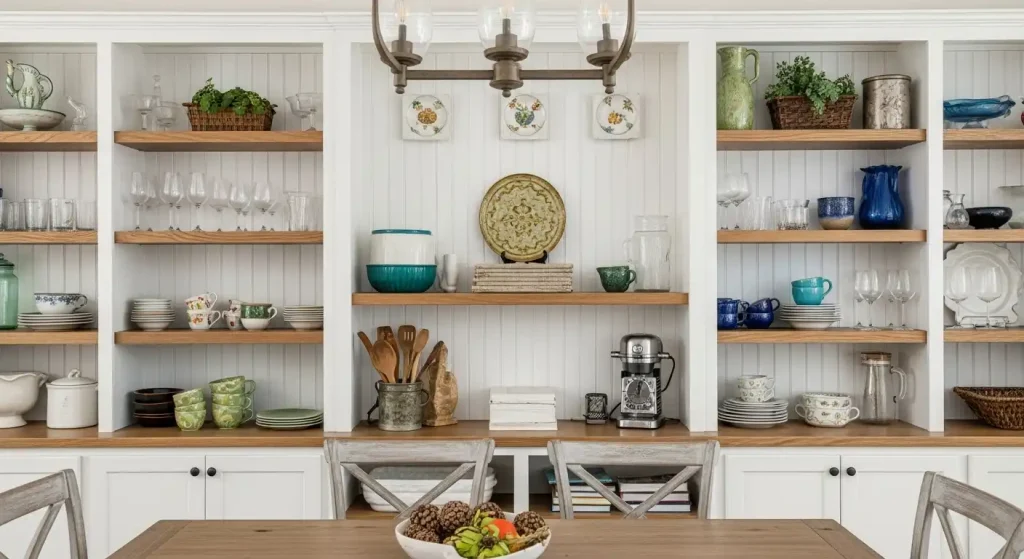
While open shelving looks beautiful, it also comes with challenges.
Dust and grease can settle on exposed dishes, especially if the dining room connects to the kitchen.
Every item on display requires regular cleaning.
A cluttered or mismatched shelf can quickly disrupt the dining room’s look.
Styling open shelves takes effort and consistency.
It’s not enough to place dishes randomly; they need thoughtful arrangement.
For some homeowners, this ongoing maintenance becomes overwhelming.
Learning how to organize shelves and rotate items helps manage the issue.
Tips from how to organize kitchen cabinets in a small kitchen can also be applied here.
Closed Cabinets: Classic Elegance and Clean Look
Closed cabinets remain a favorite choice for many dining rooms because of their timeless elegance.
They provide a streamlined look that works in both modern and traditional spaces.
Everything stays hidden behind doors, keeping the room neat and uncluttered.
This makes them perfect for formal dining rooms where a polished atmosphere is desired.
Cabinets also allow flexibility in design.
They can be painted in bold colors, stained for a natural wood finish, or enhanced with decorative hardware.
For inspiration, check out these modern dining room cabinet ideas.
Closed Cabinets: Practical Storage for Large Collections
For households with a large number of dining essentials, closed cabinets are extremely practical.
They can store complete dinner sets, glassware, and serving pieces safely.
Fragile items stay protected from dust and accidental damage.
Adjustable shelves and built-in dividers make organizing easier.
Drawers within cabinets can hold linens, placemats, and cutlery.
This kind of storage system works well for families who host often or own multiple dish sets.
Closed cabinets turn a dining room into a highly efficient storage space.
Closed Cabinets: Less Flexible for Display
The downside of closed cabinets is their limited use for display.
Since most items stay hidden, the dining room might lack personality.
Cabinets can also make a smaller room feel heavier, depending on their size and color.
However, this issue can be softened with design tricks.
Glass-front cabinet doors allow for partial display without sacrificing protection.
Mirrored panels or lighter finishes also reduce the visual weight.
For example, choosing the right wood tone can make a difference, as seen in these kitchen cabinet color ideas with wood cabinets.
Blending Open Shelving and Closed Cabinets in Dining Rooms
Some homeowners find that the best option is not choosing one over the other.
Instead, they combine open shelving with closed cabinets.
This hybrid approach creates balance between display and hidden storage.
Upper shelving can highlight stylish items, while lower cabinets hold practical essentials.
The mix allows flexibility and keeps the dining room functional without sacrificing character.
It’s a popular choice for transitional dining rooms that blend modern and traditional elements.
Designers often recommend this balance to achieve both beauty and practicality.
For more mixed-style inspiration, see ideas on two-tone kitchen cabinets.
Design Tips for Open Shelving in Dining Rooms
If you choose open shelving, styling matters as much as functionality.
Stick with a simple color palette so the shelves don’t look chaotic.
Use matching sets of dishes or glassware for a cohesive effect.
Add baskets or trays to group smaller items together.
Rotate decorative pieces seasonally to keep the dining room fresh.
Lighting can also make open shelves look more elegant.
For color coordination, you can draw inspiration from kitchen color ideas with white cabinets.
The right colors create harmony between open shelves and the rest of the room.
Design Tips for Closed Cabinets in Dining Rooms
Closed cabinets may look simple, but small details can elevate their style.
Choose cabinet finishes that complement your dining table and chairs.
Glass inserts break up solid doors and create a lighter feel.
Adding interior lighting highlights fine dishware and adds a touch of luxury.
Hardware choice also plays a major role.
Sleek handles suit modern dining rooms, while ornate pulls fit traditional spaces.
Neutral colors keep cabinets timeless, as explained in what kitchen cabinet colors are timeless.
These details transform cabinets from basic storage into stylish furniture.
Cost Considerations: Open Shelving vs. Closed Cabinets
Cost often influences the final decision between open shelving and closed cabinets.
Open shelving usually costs less because it requires fewer materials and less labor.
However, the savings may come with added effort in maintenance and styling.
Closed cabinets cost more upfront, especially if they are custom-built.
But they provide long-term durability and increase storage efficiency.
Homeowners should weigh installation expenses against everyday use.
For budget-conscious projects, combining both styles may be the smartest compromise.
This allows homeowners to save money while still gaining functionality.
Conclusion: Finding What Works Best for Your Dining Room
Choosing between open shelving and closed cabinets is not about one being better than the other.
It’s about finding the right match for your dining room’s size, style, and purpose.
Open shelving works best for those who love displaying collections and keeping items accessible.
Closed cabinets suit homeowners who prefer a tidy, low-maintenance, and timeless look.
Blending the two options often creates the most balanced solution.
No matter which path you choose, the key is to make the storage reflect your lifestyle.
Your dining room should feel both practical and personal.
When storage matches how you live, the space becomes more enjoyable every day.
